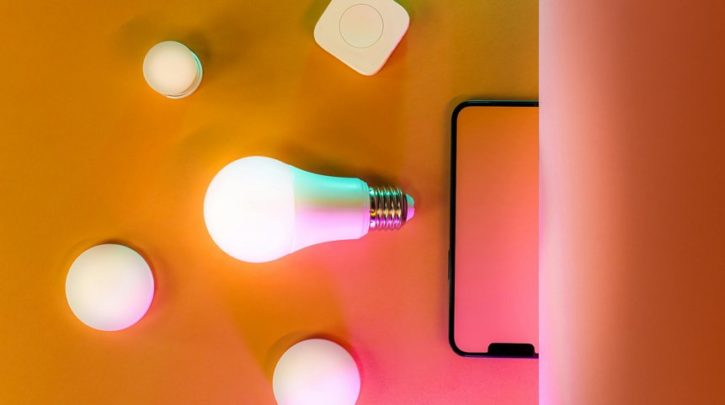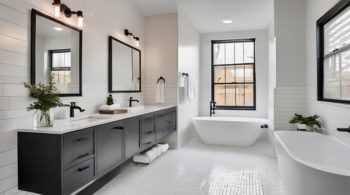You can streamline your home lighting by automating lights and scenes using Zigbee sensors, but it starts with setting up your hub and pairing devices correctly. Once connected, you’ll group lights for easier control and program sensors to react to motion, adjusting brightness to fit the time of day. These steps create a seamless environment that responds to your presence and preferences, but knowing how to handle button events and troubleshoot common issues will truly unleash your system’s potential.
Setting Up Your Zigbee Hub and Smart Lights
Before you start connecting your smart lights, make certain your Zigbee hub is compatible with the devices you plan to use and properly connected to your home network.
Zigbee hub compatibility is essential to guarantee smooth communication between your hub and smart lights. Once confirmed, follow the manufacturer’s instructions for smart light pairing, usually by pressing a button on each light to link it to the hub.
Use the hub’s app or interface to confirm successful pairing. Regularly updating your hub’s firmware also helps maintain compatibility and improves overall performance in your smart lighting system.
Creating Light Groups for Efficient Control
When you combine multiple Zigbee lights into a single group, you create a more efficient way to manage and automate your lighting.
To guarantee smooth operation, consider these points:
- Confirm group compatibility by using devices linked to the same Zigbee coordinator
- Assign specific conditions like time-based triggers or motion sensor activation
- Use light groups to control different light types simultaneously
- Enable dynamic adjustments based on user preferences or environmental changes
- Streamline your automation setup for quicker, centralized control
Defining Global Variables for Lighting Conditions
Although setting up light groups simplifies control, defining global variables for your lighting conditions takes automation a step further by enabling more precise and adaptive responses.
You’ll use various global variable types, like Boolean or integer, to represent states or levels. For lighting condition examples, a Boolean might track if kitchen lights need to be fully bright, while integers could adjust brightness based on time of day.
These variables interact with your light groups to execute specific behaviors automatically. By defining and using these variables, you create smarter, more responsive lighting scenes that fit your daily routines effortlessly.
Using Motion Sensors to Trigger Lighting Based on Occupancy
To set up motion sensors for occupancy-based light control, start by placing them in high-traffic areas where they can reliably detect movement.
You’ll want to connect these sensors to your Zigbee lighting system so the lights turn on when someone enters and switch off after a set time without motion.
Adjusting the delay before lights turn off helps match your daily routines and saves energy effectively.
Motion Sensor Setup
Setting up motion sensors to trigger lighting based on occupancy starts with integrating them properly into your Zigbee network.
Focus on motion detection techniques and sensor placement strategies to maximize effectiveness. Here’s how to get started:
- Choose dual-protocol sensors like PIR/mmWave for accurate detection.
- Position sensors to cover main entry points and high-traffic areas.
- Adjust timeout settings to control how long lights stay on after motion stops.
- Test regularly to verify sensors respond correctly.
- Connect sensors to both smart and dumb lights for flexible control.
This setup boosts convenience and energy efficiency seamlessly.
Occupancy-Based Light Control
When you use occupancy-based light control, your Zigbee motion sensors automatically switch lights on as soon as they detect movement and turn them off after a set period of no activity.
This approach offers significant benefits of occupancy, like saving energy and adding convenience.
To maximize effectiveness, apply sensor placement strategies carefully—position sensors where they cover high-traffic areas without obstructions and avoid low-use spots.
Dual-protocol sensors can improve detection sensitivity through obstacles, ensuring reliable activation.
Customize the off-timer to fit your space’s needs, making your lighting system smarter and more responsive to actual occupancy patterns.
Adjusting Brightness Levels for Day and Night Scenarios
Although you mightn’t notice it at first, adjusting your home’s lighting brightness based on the time of day can greatly improve both comfort and energy use.
To manage daytime brightness and nighttime dimming effectively, consider these steps:
- Use motion sensors to detect occupancy and adjust light levels accordingly.
- Program Boolean variables to simplify toggling between bright and dim settings.
- Create rules that trigger brighter lights during the day and softer lights at night.
- Integrate sensors that monitor ambient light for automatic brightness adjustment.
- Verify your Zigbee sensor setup supports dual-protocol compatibility for smoother operation.
This approach keeps your lighting smart and efficient.
Configuring Button Press Events on Smart Switches
You can configure smart switches to recognize different button press types like single, double, or triple taps, each triggering specific lighting actions.
By customizing these switch actions, you gain quick control over scenes such as dimming, brightening, or changing colors without opening an app.
Setting these events thoughtfully helps you tailor your lighting experience to fit your daily routines and preferences.
Button Press Event Types
Since smart switches support multiple button press event types, you can configure each action—such as single, double, or triple taps—to control different lighting scenes or colors.
This flexibility opens up extensive button customization options and multi device integration, allowing you to tailor your automation perfectly.
Consider these event types:
- Single tap for basic on/off
- Double tap to activate specific colors
- Triple tap for preset scenes
- Press-and-hold for dimming or brightening
- Combining actions with global variables for advanced control
Customizing Switch Actions
When configuring button press events on smart switches, you’ll want to assign specific actions to different presses like single taps, double taps, or long holds to get the most out of your Zigbee lighting setup.
Use advanced button configurations to link each press type to unique outcomes, such as toggling brightness or switching colors.
Integrate user preferences by creating global variables that manage lighting states, letting you customize scenes precisely.
Setting up rules for these actions guarantees smooth control over multiple lights or groups.
Regularly test your setup to maintain responsiveness and optimize performance.
Implementing Custom Lighting Scenes for Seamless Transitions
Although setting up custom lighting scenes might seem complex at first, using Zigbee sensors streamlines the process by allowing you to program specific light settings that respond to motion or time of day.
For effective scene customization and smooth light shifts, focus on these steps:
- Use motion sensors to trigger scenes automatically upon detecting movement.
- Integrate both smart and dumb lights for versatile control.
- Customize timing to turn lights off after inactivity, saving energy.
- Employ dual-protocol sensors for motion detection through obstacles.
- Adjust scenes based on time of day for comfort and convenience.
This approach guarantees seamless lighting automation.
Troubleshooting and Maintaining Zigbee Light Automations
Even the best Zigbee light automations can encounter hiccups, so knowing how to troubleshoot and maintain your system is essential for consistent performance.
Start by verifying Zigbee device compatibility with your hub, as mismatched devices often cause issues. If a light becomes unresponsive, use power cycling techniques like a double tap DOWN on the smart switch to reset it.
Set automatic rules to restore power after about 60 seconds to prevent lockups. Regularly check that devices remain powered and connected.
Adjust motion sensor timing carefully to avoid unnecessary triggers, ensuring your automation runs smoothly.
Frequently Asked Questions
Can Zigbee Sensors Integrate With Non-Zigbee Smart Home Devices?
You can integrate Zigbee sensors with non-Zigbee devices, but Zigbee interoperability challenges often arise. You’ll need a compatible hub or bridge to manage non-Zigbee device compatibility and guarantee smooth communication between different protocols.
How Secure Is Zigbee Wireless Communication Against Hacking?
You’ll find Zigbee wireless communication pretty secure thanks to Zigbee encryption methods and security protocols. They use AES-128 encryption and robust key management, making it tough for hackers to breach your Zigbee network.
What Is the Typical Range Limitation for Zigbee Sensor Networks?
You’ll find Zigbee sensor networks typically have range limitations of about 10 to 100 meters indoors, depending on obstacles. Outdoors, the range extends further, but walls and interference can still reduce effective communication distances.
Are Zigbee Sensors Compatible With Voice Assistants Like Alexa or Google?
Yes, you’ll find Zigbee compatibility with popular voice assistant integration like Alexa and Google. Just connect your Zigbee hub to these assistants, and you can control your sensors and lights using simple voice commands effortlessly.
How Do Firmware Updates Affect Existing Zigbee Light Automations?
Firmware updates can cause firmware compatibility issues, leading to automation reliability concerns. You might notice your Zigbee light automations acting unpredictably or failing. Always check update notes and test automations after updating to make certain everything works smoothly.
Christina Pulluck helped bring Nebula Electronics from a a science and tech decision forum to a full-fledged news site by creating a new design and branding. She continues to assist in keeping the site responsive and well organized for the readers. As a contributor to Nebula Electronics, Christina mainly covers mobile news and gadgets.







